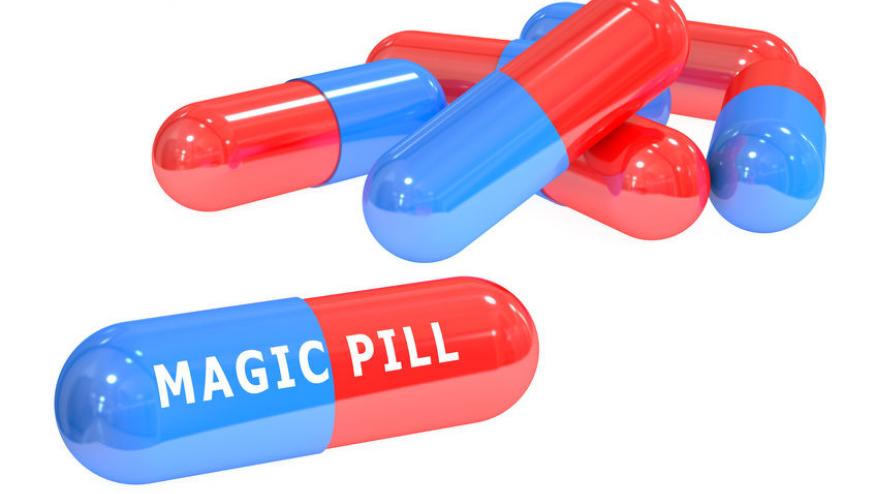Remembering the Names of Drugs Save

When I started my career in rheumatology in 1978, the specialty was mired in the gold era. Myochrysine (gold sodium thiomalate) and solganal (aurothioglucose) are complexes of the precious metal and were the mainstay DMARDs (disease modifying anti-rheumatic drugs) to treat rheumatoid arthritis (RA). The efficacy of so-called chrysotherapy was never as certain as the toxicity. As soon as methotrexate came along, gold therapy was rapidly abandoned. I bet that many rheumatologists have never prescribed these agents and that most of the current trainees aren’t even aware of their existence.
Times have changed and, for older practitioners like me, rheumatology today seems to be in genuinely a golden era. A host of highly effective biologicals is now available to inhibit cytokines, eliminate B cells and block the interaction of T cells and antigen presenting cells, a pas de deux at the heart of autoreactivity. Targeted synthetic DMARDs also have impressive efficacy and have the advantage of oral administration. While the JAK inhibitors may be called targeted, they have broad action given the role of the JAK/STAT pathway in signal transduction by many different cytokines.
Because of these advances, remission is a realistic goal for many patients with RA and significant benefits are also possible for patients with psoriatic arthritis or a spondyloarthropathy (both with and without radiographic findings).
New drugs keep appearing on the scene and the pipeline remains full, even overflowing, making many rheumatologists wondering what will come next. All of this productivity comes with some drawbacks and uncertainty. Given the wide choices available, it is difficult for the provider to get experience with many of the new products; for patients who are non-responders to methotrexate or a TNF blocker, choosing the next agent, in shared decision-making with a provider, can be a matter of guesswork, more hope and faith than science.
Another issue concerns the simple issue of knowing the names of the agents in today’s armamentarium. The nomenclature is notoriously confusing. The names of monoclonal antibodies can stretch to five syllables which defy easy pronunciation beyond the “mab” at the end. Who comes up with these names anyway? Even if I (an immunologist) actually understood the differences in the function of IL-17 (a or f), IL-12 and IL-23, there is no way I could relate the name of the antibody to its target. Of course, the brand names of the biologicals bear little resemblance to the generic names.
On top of these issues, biologicals now have a four-letter code at the end to keep the identity of the originator and biosimilars straight.
With this jumble of names, I have tried various strategies and mnemonics to remember the products, their targets and the approved indications. Alas, there is only one product that sticks with me and the reason is entirely wrong. The product is Taltz which is the brand name for ixekizumab. Taltz is a monoclonal antibody that inhibits IL-17a and is approved for the treatment of psoriasis and psoriatic arthritis.
Taltz is a good name by the standards of the pharmaceutical industry: one syllable; a short snappy sound from two “t’s” and a stirring finale with a “z.” The letters “z” and “x” are prized for names for drugs because they are supposed to convey strength.
When I think of the name Taltz, a funny association occurs in my mind and the phrase “Use the Taltz” pops into prominence. Of course, I should think of the first Star Wars movie when the voice of Obi-wan Kanobe implores Luke Skywalker to “Use the force, Luke” in the scene where Luke zooms in an X-wing in a trench around the Death Star.
The anticipated neural connection does not happen, however. Instead, the character called Yogurt in the Mel Brooks’ move Spaceballs shows up. Yogurt, as portrayed by Mel Brooks, was gnome-like and had flyaway white hair, a deeply furrowed brow and an interest in merchandising. Yogurt wore a signet ring with the letter “S” encrusted in jewels. The ring supposedly had mystical powers and could transform into a light saber.
Here, the vagaries of the human mind create mischief.
Like Star Wars, Spaceballs has a rollicking fight scene in which Lone Starr (Bill Pullman) clashes with Dark Helmet (Rick Moranis). Both had glowing light sabers but Lone Starr, who had received a ring from Yogurt, loses his to Dark Helmet and becomes defenseless. The disembodied voice of Yogurt tells Lone Starr that the ring is bupkis (nothing) and came from a box of Cracker Jacks. Then, as I recalled with great certainty, Yogurt implores Luke, “Use the Schmaltz,” a hilarious take-off on Obi-wan Kanobe’s imprecation.
For those of you who are not expert in gourmet cooking, schmaltz is rendered chicken or goose fat. Schmaltz comes from the old country-Middle Europe-and can be spread on bread or used like butter or lard for frying. The term schmaltz is of Yiddish origin and is also used to connote excessive sentimentality or corniness, especially for music which is schmaltzy.
Mel Brooks is a comic genius, one of the funniest men alive. To me, “Use the schmaltz”-whatever the meaning- is absolutely brilliant.
Being a diligent author, I decided to do some fact-checking and verify the original line from Spaceballs. Watching a short YouTube video, I discovered that Yogurt actually said, in an exaggerated and gravelly New York accent, “Use the Schwartz.” He did not say use the schmaltz because the mystical powers were the Schwartz not the schmaltz.
I was shocked and dismayed by the failure of my memory to recall a classic line from one of my favorite comedies.
Actually, I think that “Use the schmaltz” is funnier than “Use the Schwartz” but I am no Mel Brooks. He writes for Broadway and Hollywood. I write for RheumNow.
Schmaltz would be a fine name for a drug-one syllable, punchy, a zippy “tz” sound. The association with healing is also good since the therapeutic powers of chicken soup are legendary. Chicken soup can do wonders in the treatment of colds, sore throats and other viral illnesses. And, to drive the point home, on the surface of chicken soup float nice round droplets of chicken fat which, mirabile dictu, are the color of gold. Unbelievable.
So the next time you want to choose a DMARD for inflammatory arthritis, do the best you can to remember the drug names and, as you let your mind be your guide, may the force, schmaltz, Schwartz or whatever be with you.










If you are a health practitioner, you may Login/Register to comment.
Due to the nature of these comment forums, only health practitioners are allowed to comment at this time.